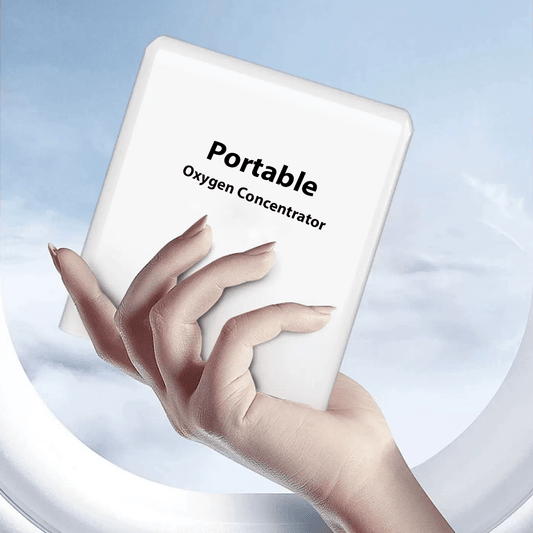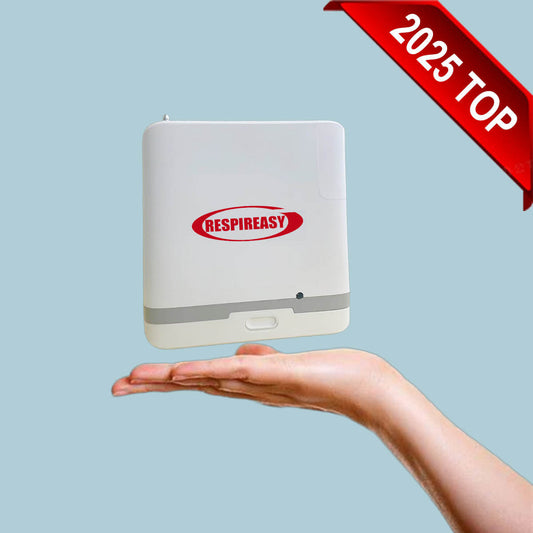2024 ¿Cómo elegir un concentrador de oxígeno adecuado 1-20 LPM?
En la mayoría de los escenarios médicos, los concentradores de oxígeno suelen ser el "pilar vital" de los pacientes. En el caso de los pacientes con enfermedades respiratorias, como la enfermedad pulmonar obstructiva crónica y el asma, los concentradores de oxígeno pueden proporcionar oxígeno de alta concentración de forma continua y estable, aliviar las dificultades respiratorias y aliviar el dolor.
Hoy en día, los concentradores de oxígeno ya no son equipos profesionales limitados al uso médico, sino que están entrando gradualmente en la vida de más personas y desempeñando un papel inesperado.
1
Uso cotidiano de personas mayores con enfermedades

En el caso de las personas mayores con enfermedades cardiopulmonares crónicas, los concentradores de oxígeno pueden aliviar síntomas como la opresión en el pecho y la falta de aire en la vida diaria. La inhalación de oxígeno según el tiempo y el caudal de inhalación recomendados por el médico puede mejorar la calidad de vida de las personas mayores y también puede permitirles recibir tratamiento y rehabilitación en un entorno familiar, reducir la presión psicológica y reducir el número de hospitalizaciones. A largo plazo, no solo facilita la inhalación de oxígeno, sino que también ahorra muchos gastos médicos.
Las personas mayores sanas también pueden inhalar oxígeno durante un breve periodo de tiempo para refrescar la mente y aliviar el malestar cuando se sienten cansadas o la calidad del aire es mala. Por ejemplo, en días de niebla, cuando no se pueden realizar actividades al aire libre, la inhalación de oxígeno puede hacer que el cuerpo se sienta más cómodo.
2
Mujeres embarazadas
Las mujeres embarazadas suelen tener una mayor carga física durante el embarazo y una mayor demanda de oxígeno. El uso de un concentrador de oxígeno para respirar oxígeno puede proporcionar suficiente oxígeno al feto, evitar los síntomas de hipoxia, promover el crecimiento y el desarrollo fetal, mejorar la función cardíaca y cerebral fetal y aliviar las molestias en las mujeres embarazadas.
Sin embargo, las mujeres embarazadas deben respirar oxígeno bajo la supervisión de un médico y evitar la autointervención. Por ejemplo, si las mujeres embarazadas respiran oxígeno durante mucho tiempo y a un alto caudal, puede afectar al desarrollo del feto. Por lo tanto, las mujeres embarazadas deben prestar mucha atención al momento, la frecuencia y la concentración de oxígeno de la inhalación para evitar una ingesta excesiva. El examen prenatal regular puede descubrir y resolver oportunamente los problemas en el proceso de desarrollo fetal.
3
Personas que a menudo realizan trabajos mentales
Para las personas que trabajan en escritorios durante mucho tiempo y los estudiantes que enfrentan una gran presión académica, el trabajo de alta intensidad puede causar hipoxia cerebral, fatiga, falta de atención, etc. El uso de un concentrador de oxígeno para respirar oxígeno durante un tiempo puede aliviar la fatiga, aumentar el suministro de oxígeno al cerebro y mejorar la eficiencia laboral. Sin embargo, la inhalación de oxígeno no es una panacea. El efecto de la inhalación de oxígeno es diferente para la fatiga causada por diferentes razones.
4
Circunstancias especiales

Después de reuniones familiares o cuando alguien bebe, pueden aparecer mareos, náuseas, dificultad para respirar y otros síntomas de malestar. Se recomienda enviar al paciente al hospital para que le realicen un ECG a tiempo, medir la saturación de oxígeno en sangre y observar el nivel de saturación de oxígeno en sangre. Si la saturación de oxígeno en sangre es superior al 95 %, generalmente no hay problema. Si la saturación de oxígeno en sangre es inferior al 90 %, se puede considerar administrar oxígeno por cánula nasal o por mascarilla para aliviar las molestias y prevenir la hipoxemia.
Además, las personas que viven en zonas con mala calidad del aire durante mucho tiempo también pueden obtener oxígeno más puro a través de concentradores de oxígeno para reducir el daño de la contaminación del aire al cuerpo.
5
Deportistas

>>>Potentes concentradores de oxígeno ajustables de 10 a 20 litros, flujo continuo de oxígeno de alta concentración del 95 % para uso deportivo
La inhalación adecuada de oxígeno después del ejercicio puede ayudar a la recuperación, ya que durante el ejercicio de alta intensidad, el tejido muscular consume una gran cantidad de oxígeno, lo que provoca un cierto grado de hipoxia en el cuerpo. La suplementación de oxígeno puede ayudar a aliviar la fatiga después del ejercicio y ayudar al cuerpo a recuperarse más rápido. Al inhalar oxígeno, el cuerpo puede reponer rápidamente suficiente oxígeno, aliviar los síntomas de fatiga y mejorar las sensaciones físicas después del ejercicio.
Además, algunos deportistas suelen necesitar recuperar rápidamente su fuerza física y su estado mental en un corto período de tiempo para prepararse para el siguiente partido o entrenamiento. La administración de oxígeno suplementario puede ayudar a los deportistas a recuperar su frecuencia cardíaca, frecuencia respiratoria y presión arterial normales más rápidamente, acelerando así la recuperación del organismo. Tras la inhalación de oxígeno, el contenido de oxígeno en la sangre del cuerpo aumenta, lo que ayuda a promover el metabolismo y el proceso de recuperación.
Sin embargo, la suplementación de oxígeno no es adecuada para todo el mundo. Para la gente común, la suplementación de oxígeno a través de la respiración normal después del ejercicio es suficiente para satisfacer las necesidades del cuerpo. Por lo tanto, antes de suplementar el oxígeno, consulte a un médico profesional y asegúrese de que el método y la dosis de suplementación de oxígeno sean adecuados para su condición física.
6
Personas que viajan a zonas de gran altitud

En zonas de gran altitud, el cuerpo puede experimentar hipoxia, lo que provoca síntomas incómodos como mareos, fatiga y debilidad, e incluso puede causar problemas graves como el mal de altura. La inhalación de oxígeno puede ayudar a mejorar esta situación, proporcionar un suministro suficiente de oxígeno, ayudar al cuerpo a adaptarse al entorno de gran altitud o restablecer los niveles normales de oxígeno.
Se recomienda llevar un concentrador de oxígeno portátil para viajar a la meseta, que pueda proporcionar oxígeno en todo momento, para que pueda disfrutar de la belleza de la naturaleza sin preocuparse por quedarse sin oxígeno y disfrutar de la alegría de viajar sin preocupaciones.
Concentrador de oxígeno pequeño y liviano 2024, 8 litros, 93 % de pureza, minimáquina generadora de O2 portátil, bajo nivel de ruido y batería de larga duración
Cómo elegir un concentrador de oxígeno para uso médico y sanitario
Ya sea por motivos médicos o de atención sanitaria, la elección de un concentrador de oxígeno requiere una consideración exhaustiva de muchos factores, entre los que se deben destacar los siguientes. Recordamos que la oxigenoterapia debe realizarse bajo la supervisión de un médico. La concentración de oxígeno adecuada debe determinarse según el estado de salud y la condición del individuo para lograr el mejor efecto del tratamiento y minimizar los posibles riesgos.
01 Necesidades de uso claras
• Necesidades médicas: Si usted es un paciente con enfermedades respiratorias (como enfermedad pulmonar obstructiva crónica, cor pulmonale, asma, etc.), enfermedades cardiovasculares y cerebrovasculares, diabetes y otras enfermedades, y necesita terapia de oxígeno a largo plazo para mejorar su condición física, entonces debe elegir un concentrador de oxígeno de grado médico. Los concentradores de oxígeno médico pueden proporcionar oxígeno estable de alta concentración para satisfacer las necesidades de tratamiento del paciente. Por ejemplo, los pacientes con EPOC respiran oxígeno durante mucho tiempo todos los días. Se recomienda elegir un concentrador de oxígeno médico de 5 litros o más para que haya suficiente suministro de oxígeno cuando la enfermedad ataca o hay dificultad para respirar.
• Necesidades de atención médica: si es una persona sana o utiliza un concentrador de oxígeno solo con fines de salud, como aliviar la fatiga, mejorar la calidad del sueño y mejorar la inmunidad, puede elegir un concentrador de oxígeno para fines de atención médica. Por lo general, un concentrador de oxígeno con un caudal de oxígeno de 1 a 5 litros puede satisfacer las necesidades y, por lo general, no requiere una concentración y un caudal de oxígeno demasiado elevados.
02 Concentración de oxígeno
• Uso médico: La concentración de oxígeno de un concentrador de oxígeno médico debe ser estable en más del 90%, lo que es clave para garantizar el efecto del tratamiento. Al elegir, consulte el informe de prueba o las instrucciones del producto para asegurarse de que su concentración de oxígeno cumpla con el estándar. Algunos concentradores de oxígeno de alta calidad, como los que utilizan tecnología de adsorción por oscilación de presión con tamiz molecular, pueden proporcionar oxígeno en alta concentración.
• Uso sanitario: el requerimiento de concentración de oxígeno de los concentradores de oxígeno para uso sanitario es relativamente bajo, por lo que al elegir, también debe prestar atención a los parámetros relevantes del producto. Puede consultar a un médico para obtener asesoramiento profesional sobre inhalación de oxígeno según su situación personal.
03 Flujo de oxígeno
• Uso médico: En el caso de pacientes que necesitan oxigenoterapia médica, la demanda de flujo de oxígeno varía según la afección. En general, los pacientes leves pueden requerir un flujo de oxígeno de unos 3 litros/minuto, mientras que los pacientes moderados y graves requieren un concentrador de oxígeno con un flujo de 5 litros/minuto o superior. A la hora de elegir, se debe determinar según el consejo del médico y la situación real del paciente.
• Uso sanitario: El caudal de oxígeno de los concentradores de oxígeno para uso sanitario suele ser de entre 1 y 5 litros/min, que se puede seleccionar en función de las preferencias y necesidades personales. Si se utiliza solo ocasionalmente, basta con un concentrador de oxígeno de bajo caudal; si se utiliza con frecuencia, se puede seleccionar un producto con un caudal ligeramente superior.
Cómo realizar el mantenimiento del concentrador de oxígeno cuando está inactivo para prolongar su vida útil
Si el concentrador de oxígeno necesita estar inactivo durante mucho tiempo, podemos mantenerlo de las siguientes maneras para extender su vida útil.
En primer lugar, coloque el concentrador de oxígeno en un lugar seco y bien ventilado. Evite la luz solar directa, la humedad, las fuentes de calor y las fuentes de fuego brillantes y oscuras, los entornos con temperaturas demasiado altas o demasiado bajas, la contaminación severa o los entornos con humo, etc. Además, no coloque residuos ni recipientes con agua y aceite sobre la carcasa del concentrador de oxígeno, y no coloque residuos en el puerto de escape.
En segundo lugar, limpie la carcasa y el filtro del concentrador de oxígeno con regularidad para evitar que el polvo y las impurezas se acumulen y afecten el efecto de producción de oxígeno. Apague el dispositivo y desconecte la fuente de alimentación de CA o CC antes de limpiarlo. Al limpiar, evite rociar agua o detergente directamente sobre la carcasa. En su lugar, use un paño o una esponja húmedos (no mojados) y rocíe un detergente neutro sobre el paño o la esponja para limpiar la carcasa y el adaptador de corriente.
En cuanto al filtro, puede limpiarlo o reemplazarlo según las instrucciones. Además, cuando el concentrador de oxígeno no se utilice durante un período prolongado, se debe desconectar la fuente de alimentación para evitar el envejecimiento del equipo debido al suministro de energía a largo plazo.




























































